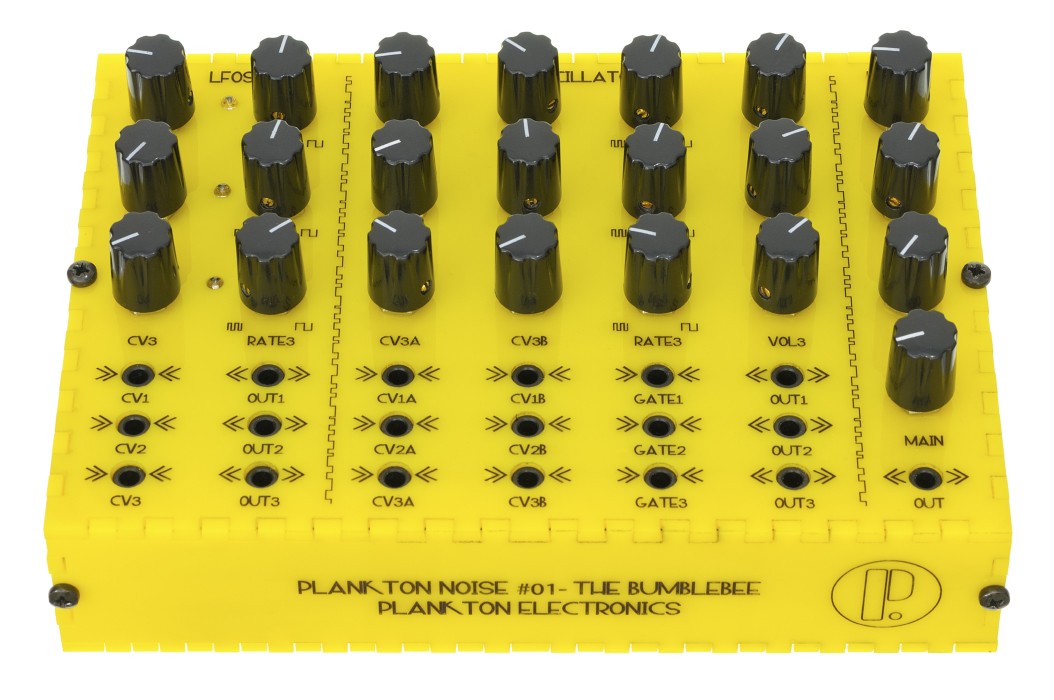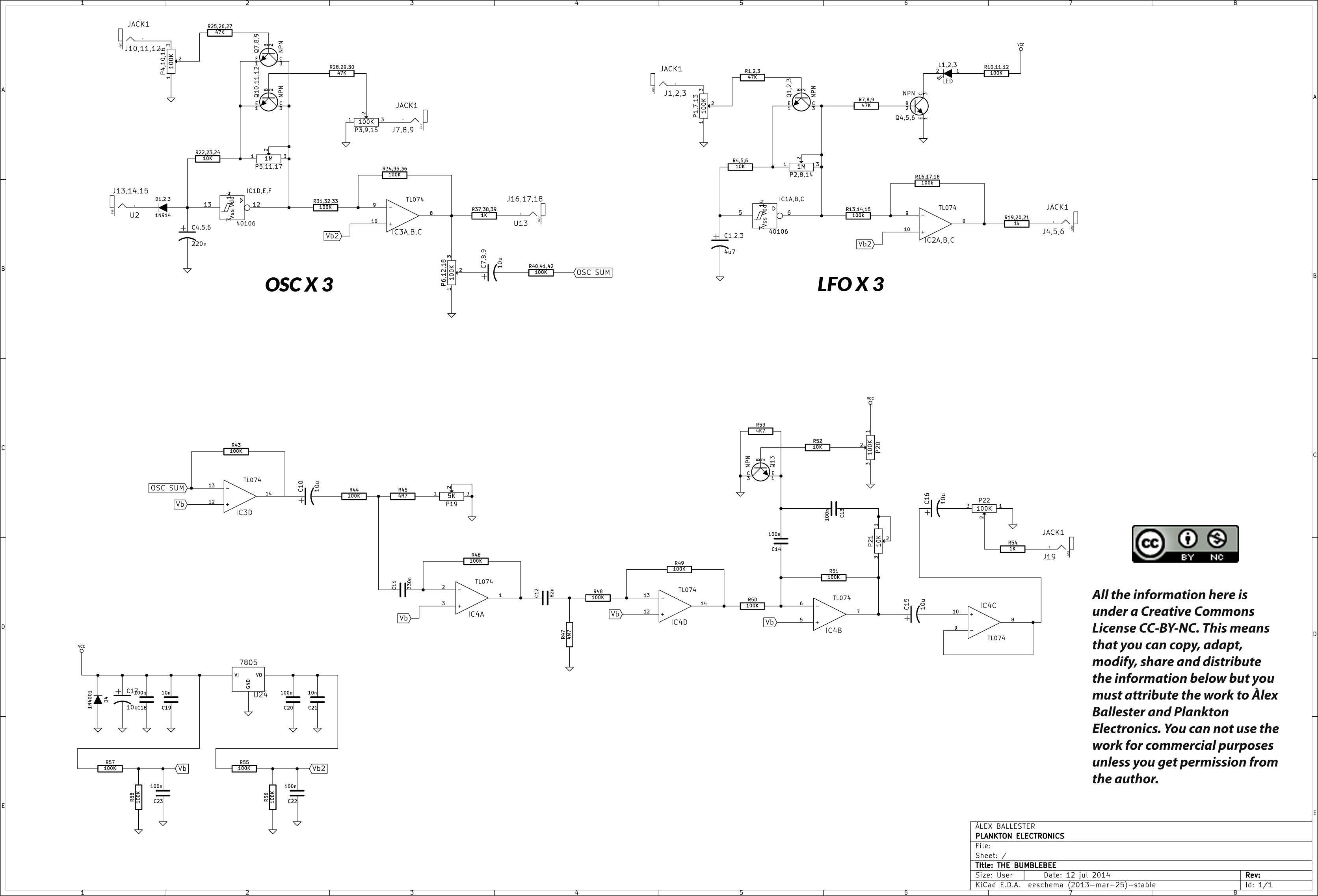Filter on ALL, SYNTH, DRUM, SAMPLER or MISC |
Total list currently 2405 items in 330 Brands |
Plankton Electronics | The Bumblebee |
Description | Here it is The Bumblebee! The first of the Plankton Noise series. This is a super easy to mount and play DIY drone ‘n’ noise machine. A simple but powerful 100% analog design capable of generate the most annoying sounds of the neighborhood. Designed for DIY beginners, noise makers, and weird sound enthusiasts, it’s modular design converts it into a very versatile machine capable of multiply its power when connected to other modular systems. Available at the store as a modular kit or fully assembled! Oscillators Each oscillator generates an audible tone (a square wave) controlled with the Rate potentiometer. With the Vol pot the signal is sent to the filters and then to the main output. Each osc has its own output, which is independent of the volume control. With the CV inputs we can control the tone of the oscillator with antoher signal. This is usually done with the LFO’s or another oscillator but you can use any signal from 0 to 5V. When a signal of more than 0V feeds an oscillator its tone will increase. With the CV potentiometer we can attenuate the amount of the modulation. OSCILLATOR MODULATION With the gate input we can switch on and off the oscillator creating gate and ducking effects. This only accepts 0 or 5V inputs because it acts as a switch. Anyway you can experiment with other signals. OSCILLATOR GATE We can create a very weird patch connecting each OSC to the CV IN of the next one (OSC1 -> CV2A, OSC2 -> CV3A, OSC3 -> CV1A ). This way we create feedback between the 3 oscillators. Tweaking the RATE and CV potentiometers the machine will produce very rare sounds. LFOS The LFOs, Low Frequency Oscillators, are essentially the same design as the oscillator, but with a lower frequency (the lower settings are not audible). It only have one CV IN each and no GATE input. Each LFO have its own led to see the frequency. The LFOs are not connected anywhere like the Oscillators, just to its outputs. Filters The high pass filter cut all the frequencies below a point which is set with the HPF pot. It is usually used to remove the non desired lows and to create a thinner sound. The low pass filter works the oposite as the HPF, cutting all the freqs over a point. Besides it have the RESO pot which produces a feedback near the cuttof frequency creating a very popular and nice gritty sound. Setting all the volumes of the oscillators to its maximum position will cause the filters to distort. Output The main output sums everything and sends it to the OUT connector via the MAIN pot. |
| Brand | Plankton Electronics |
| Model | The Bumblebee |
| Device | Synth |
| Type | Desktop |
| Engine Type | Analog |
| Engine | VCO |
| Voices (max) | 1 |
| Oscillators | 3 |
| LFO | 3 Square |
| Engine Detailed | 3 VCO, Square |
| Filter (VCF) | 2 24dB Slope (4-pole), High Pass, Low Pass, Resonance |
| Keys | 0 |
| Key type | N/A |
| Velocity | N/A |
| Aftertouch | N/A |
| CV-gate | CV/GATE I-O |
| Produced: | 2014 - 2016 |
| Legend: | Obvious | Y: Yes, N: No, N/A: Not Applicable | |
| VCO | Voltage Controlled Oscillator | DCO | Digital Controlled Oscillator |
| LFO | Low Frequency Oscillator | Sub | Sub Oscillator |
| VCF | Voltage Controlled Filter | VCA | Voltage Controlled Amplifier |
| Velocity | As with a piano, the harder you hit a key, the louder the sound, unlike most organs which always produce the same loudness no matter how hard you hit a key. | Aftertouch | Pressing a key after you activated it. Channel Aftertouch, no matter which key, it will send a Channel message. Poly Aftertouch, sends the pressure per key instead of the whole channel. |
| Values for OSC, LFO, Filter, Envelope are per voice unless stated otherwise. | |||




